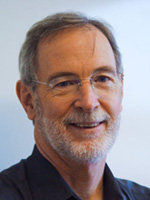
Jon Clardy, Ph.D.
The laboratory focuses on biologically active small molecules, especially those from bacteria and fungi with an overall goal of understanding how small molecules control biological processes.
Research:
The laboratory focuses on biologically active small molecules, especially those from bacteria and fungi with an overall goal of understanding how small molecules control biological processes. Organizing themes include: 1) function-based discovery of microbially-produced small molecules and their roles in microbial symbioses , 2) function-based discovery of biologically active small molecules using high-throughput screening, 3) genome-based discovery of bacterially-produced small molecules.
1. We have focused on the small molecule exchanges that underlie multilateral symbioses involving bacteria, partly because they are widespread and poorly understood and partly because they lead to the discovery of new useful molecules in the biological context in which they evolved. Current projects involve the bacterial symbionts of fungus-growing ants, members of the human gut microbiome linked to disease, and interactions between micro-algae and bacteria.
2. We also continue to discover small molecules in a more medically relevant context: high-throughput screening for a variety of diseases. In these projects we have focused on antibacterial, antifungal, and antiparasitic agents along with immunomodulators and anticancer agents.
3. It is now quite clear that well studied bacteria – the producers of drugs that are used on the ton scale, for example – are genetically capable of producing many more potentially useful small molecules. The biosynthetic gene can be seen but the associated molecules have never been characterized. Ways to access these cryptic metabolites is a current focus of the laboratory.
Address:
Room C-643
240 Longwood Avenue
Boston, MA 02115
Biochem Biophys Res Commun
View full abstract on Pubmed
Langmuir
View full abstract on Pubmed
J Nat Prod
View full abstract on Pubmed